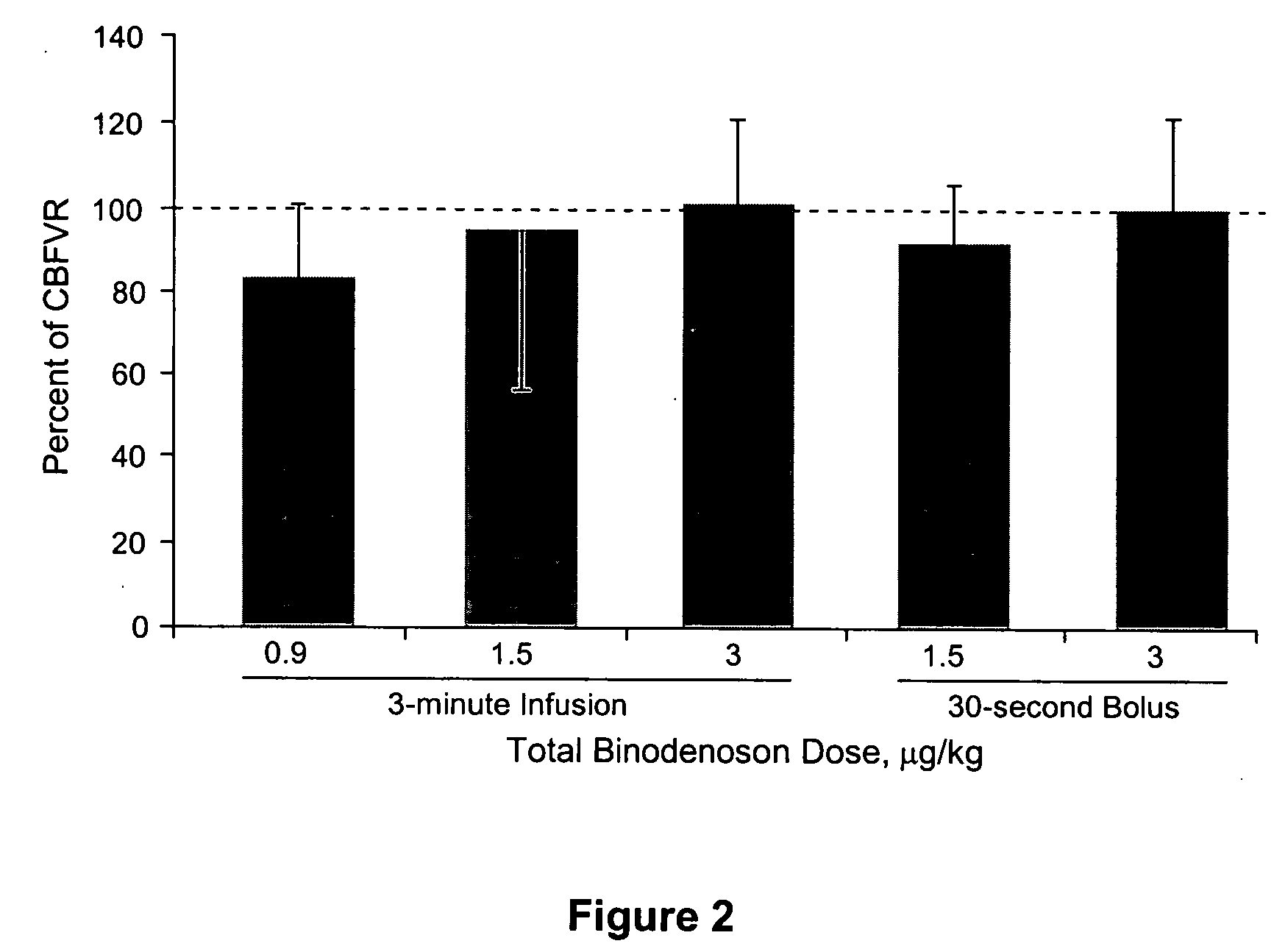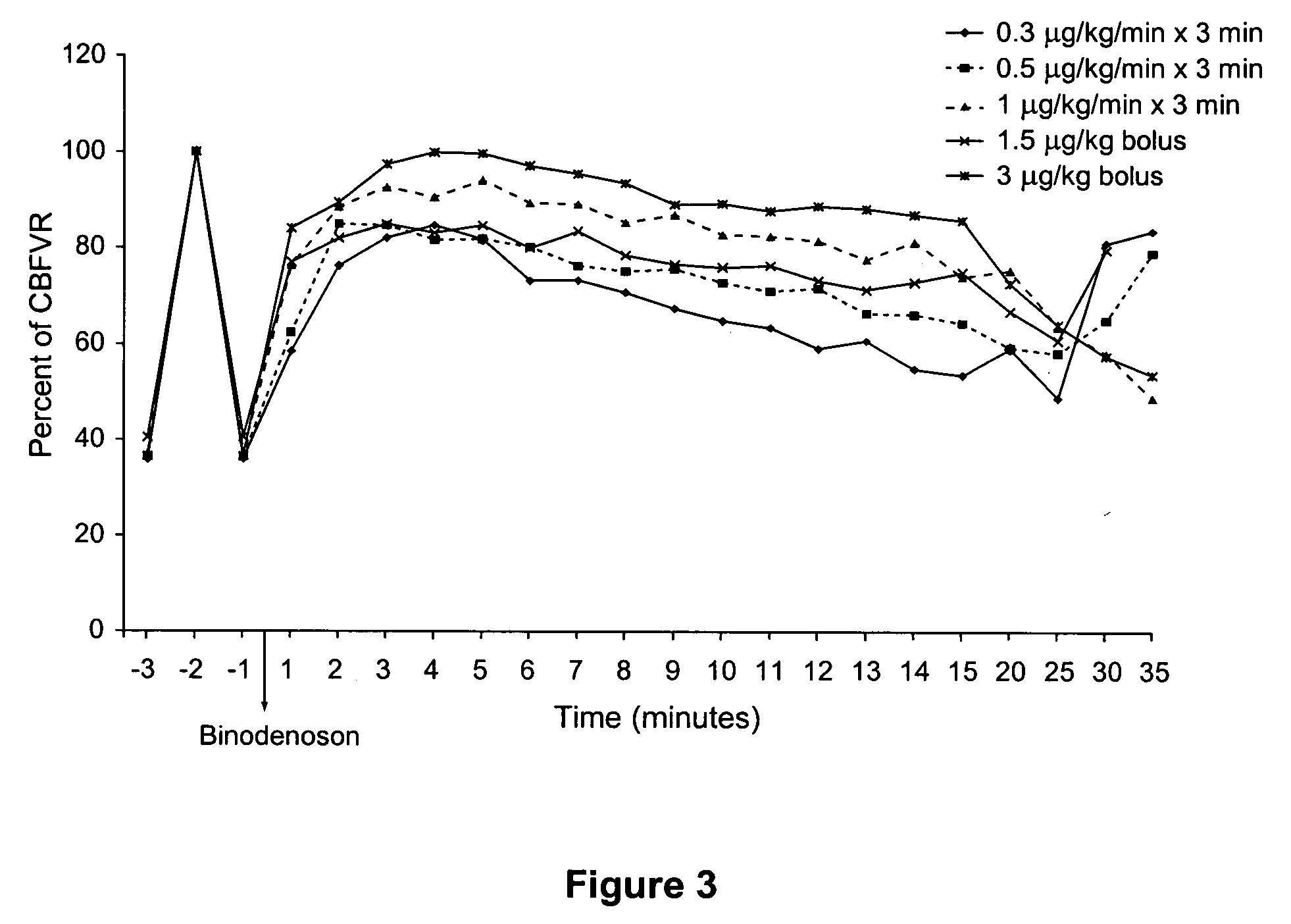Method of detecting myocardial dysfunction in patients having a history of asthma or bronchospasm
- Summary
- Abstract
- Description
- Claims
- Application Information
AI Technical Summary
Problems solved by technology
Method used
Image
Examples
example 1
Measurement of Pulmonary Responses to Binodenoson in Human Patients with Mild, Intermittent Asthma
[0117] Methodology
[0118] The study consisted of 2 parts: a Single-Blind Part and a Double-Blind Part. The dose escalating, Single-Blind Part enrolled subjects with mild, intermittent asthma, and consisted of 3 sequentially enrolled dosing cohorts with 8 subjects per cohort, such that Dosing Cohorts 1, 2, and 3 received binodenoson target doses of 0.5 μg / kg, 1.0 μg / kg, and 1.5 μg / kg, respectively. All 8 subjects in a dosing cohort must have completed dosing at the assigned dose and a medical review of each cohort must have been acceptable before enrollment in the next cohort began. The Double-Blind Part was initiated only if the medical review of all safety data from the Single-Blind Part was acceptable. In the Double Blind Part, subjects with mild, intermittent asthma were randomly assigned in a 2:1 ratio to receive either binodenoson 1.5 μg / kg (n=40 planned) or placebo control (n=20 ...
example 2
Dosing Regimens of Binodenoson that Produce Coronary Microcirculatory Vasodilation Comparable to Adenosine in Human Patients Without Histories of Asthma or COPD
[0153] This example describes studies designed to determine useful doses and dosing regimens for binodenoson use as a pharmacologic stressor. Specifically, the study was designed to establish the binodenoson dosing regimen that produced a level of coronary vasodilation comparable to that produced by adenosine during a pharmacologic stress procedure, with the fewest and least severe side effects. Coronary blood flow velocity reserve (CBFVR) was established by intracoronary (IC) bolus injections of adenosine just prior to administration of binodenoson to allow a direct comparison of the magnitude of responses.
[0154] Patients presenting for cardiac catheterization were screened for eligibility and provided informed consent prior to sedation. Final eligibility was determined by the investigator during diagnostic catheterization...
example 3
Assessment of Pharmacokinetics and Safety of Binodenoson in Non-Asthmatic Human Patients
[0167] This example describes studies designed to assess single-dose pharmacokinetics, safety and tolerability of intravenous binodenoson. Binodenoson was been administered to human beings to determine the safety and pharmacokinetics of a wide range of doses.
PUM
 Login to View More
Login to View More Abstract
Description
Claims
Application Information
 Login to View More
Login to View More - R&D
- Intellectual Property
- Life Sciences
- Materials
- Tech Scout
- Unparalleled Data Quality
- Higher Quality Content
- 60% Fewer Hallucinations
Browse by: Latest US Patents, China's latest patents, Technical Efficacy Thesaurus, Application Domain, Technology Topic, Popular Technical Reports.
© 2025 PatSnap. All rights reserved.Legal|Privacy policy|Modern Slavery Act Transparency Statement|Sitemap|About US| Contact US: help@patsnap.com



